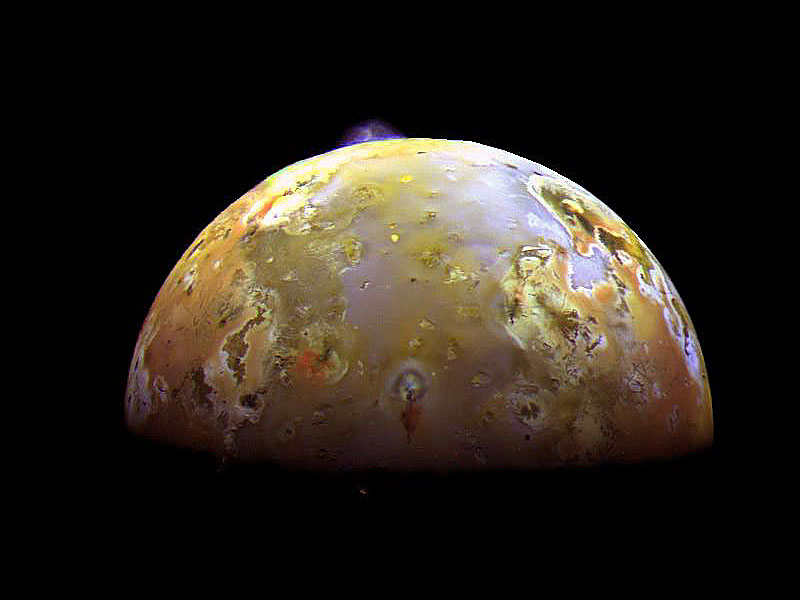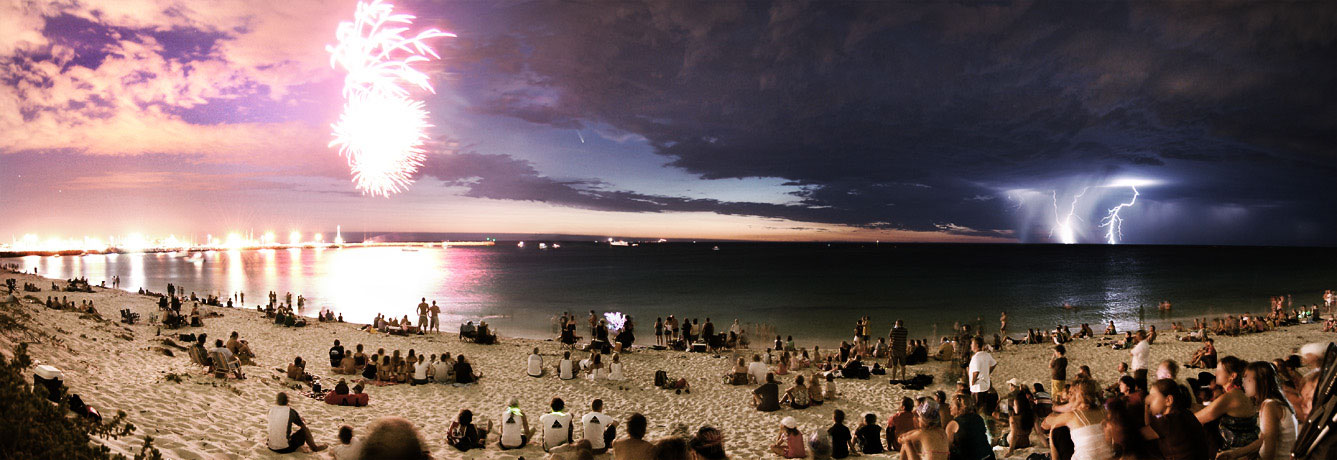 Io: The Prometheus Plume (3.07) This is a picture is Jupiter's moon Io and its sulfurous eruptions. This was taken with the Galelio spacecraft 75 km about Io's surface. There is a volcanic caldera called Pillan Patera that is shadowed, though it is releasing a Prometheus plume. Prometheus was the Greek god of fire, thus giving the name to this bluish plume. This plume has been active for 18 years.
Io: The Prometheus Plume (3.07) This is a picture is Jupiter's moon Io and its sulfurous eruptions. This was taken with the Galelio spacecraft 75 km about Io's surface. There is a volcanic caldera called Pillan Patera that is shadowed, though it is releasing a Prometheus plume. Prometheus was the Greek god of fire, thus giving the name to this bluish plume. This plume has been active for 18 years.
 Comet Between Fireworks and Lightning (3.06) This picture was taken in Perth, Australia, on January 26, or Australia Day. There were fireworks to celebrate, though a thunder and lightning storm was occuring at the same time. Towards the center of the image is Comet McNaught, illuminated by the fireworks and lightning.
Comet Between Fireworks and Lightning (3.06) This picture was taken in Perth, Australia, on January 26, or Australia Day. There were fireworks to celebrate, though a thunder and lightning storm was occuring at the same time. Towards the center of the image is Comet McNaught, illuminated by the fireworks and lightning.
 Comet Between Fireworks and Lightning (3.06) This picture was taken in Perth, Australia, on January 26, or Australia Day. There were fireworks to celebrate, though a thunder and lightning storm was occuring at the same time. Towards the center of the image is Comet McNaught, illuminated by the fireworks and lightning.
Comet Between Fireworks and Lightning (3.06) This picture was taken in Perth, Australia, on January 26, or Australia Day. There were fireworks to celebrate, though a thunder and lightning storm was occuring at the same time. Towards the center of the image is Comet McNaught, illuminated by the fireworks and lightning.
February 1st, 2007: I saw the moon yesterday (the 1st) when I was driving home from the Halka field trip. It was totally round and golden because there was to be a full moon that night. It looked pretty cool, but there were these clouds blocking it somewhat so that it looked really eerie. It was very Halloween-esque, which was kind of festive but not. I could see the maria very well, so that was interesting. I wonder if it'll be the same tonight, or if it'll even be clear enough to see anything...
 Flame Nebula Close-Up (3.05) NGC 2024, known as the flame nebula, can be found in Orion. The large amounts of ionized hydrogen make it red-orange. By using infrared, one can see the interstellar dust that is being absorbed and the hot, young stars behins it. It also has UV light. It is 1500 light years away.
Flame Nebula Close-Up (3.05) NGC 2024, known as the flame nebula, can be found in Orion. The large amounts of ionized hydrogen make it red-orange. By using infrared, one can see the interstellar dust that is being absorbed and the hot, young stars behins it. It also has UV light. It is 1500 light years away.


